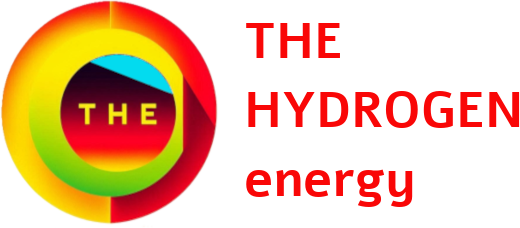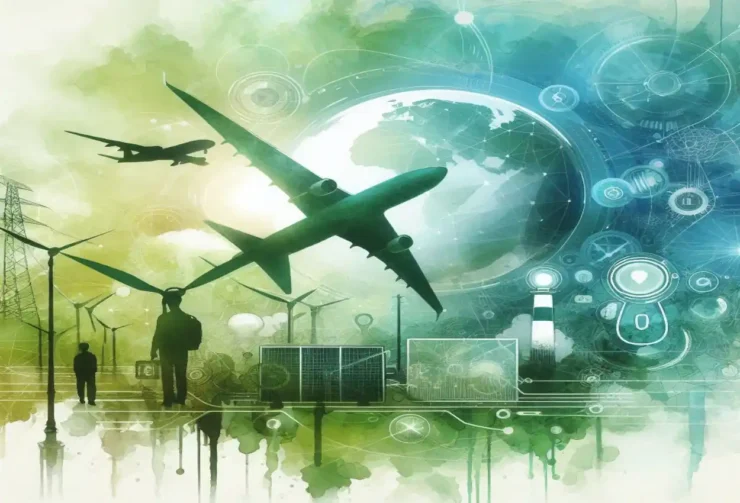e-SAF or eSAF or Electro-Sustainable Aviation Fuel (eSAF), also known as Power-to-Liquid (PtL) fuel, is an advanced synthetic aviation fuel produced using renewable electricity, green hydrogen, and captured CO₂. Unlike bio-based SAF, which depends on agricultural or waste feedstocks, eSAF is generated from non-biological sources, making it highly scalable and independent of land-use, water constraints.
Looking ahead IATA reports that by October 2024, global air travel demand (RPKs) had grown 7.1% year-over-year, nearing full recovery from pre-pandemic levels. IATA forecasts air travel demand will double by 2040, with origin-destination passengers rising from 4 billion in 2019 to over 8 billion. This strong growth presents both opportunities and challenges, particularly in reducing aviation emissions.
To mitigate its climate impact, the International Civil Aviation Organization (ICAO) has set a collective global aspirational goal to reduce CO₂ emissions from international aviation by 5% by 2030, with a long-term commitment to achieve net-zero emissions by 2050.
Understanding Sustainable Aviation Fuel (SAF)
The aviation industry is actively pursuing multiple pathways to decarbonization, with a primary focus on drop-in Sustainable Aviation Fuels (SAF). SAF is a jet fuel alternative produced from non-petroleum based feedstocks, such as biomass, waste cooking oil, etc., Chemically, SAF is almost identical to conventional fossil-derived jet fuel, allowing seamless use in existing aircraft and fueling infrastructure. Current SAF fuels can reduce lifecycle CO2 emissions by 60-80% on average compared with fossil-derived jet fuels.
SAF production through two primary pathways:
- Bio-SAF: Produced from (No fossil fuel components) renewable organic materials, such as agricultural residues, used cooking oil, and animal fats.
- e-SAF or eSAF: Synthesized via Power-to-Liquid (PtL) technology, using captured CO₂ (from industrial emissions or direct air capture) and green hydrogen to produce hydrocarbons.
Both bio-SAF and e-SAF, once produced, are chemically very similar to conventional jet fuel. This allows them to be blended with existing jet fuel and used in current aircraft without needing any modifications, calling as drop in replacement. The maximum percentage of SAF that can be blended is currently limited to 50%, but research is ongoing to enable the use of 100% SAF in the future.
The Challenges of Scalability: Limitations of Biomass-Derived SAF
While SAF derived from biomass represents a valuable and necessary initial step, fundamental limitations restrict its widespread scalability and long-term viability:
- Feedstock Competition: Sustainable biomass sources often face intense competition from other critical sectors, including food production, animal feed, and a wide range of industrial applications, potentially leading to resource scarcity and complex economic trade-offs.
- Land Use Change: The cultivation of dedicated energy crops for SAF production can trigger deforestation, habitat loss, and detrimental indirect land-use change emissions, effectively negating a significant portion of the intended climate benefits.
- Water Usage: Many biomass feedstocks require substantial water resources for cultivation and processing, potentially exacerbating water scarcity issues, particularly in arid or semi-arid regions that are already facing significant environmental challenges.
- Logistics and Transportation: The inherently dispersed nature of biomass feedstocks necessitates the development of complex and energy-intensive logistics networks for collection, efficient transportation, and subsequent processing, further impacting the overall environmental footprint.
e-SAF: A Transformative Approach: Engineering Fuel with Electricity
Electro-Sustainable Aviation Fuel (e-SAF) or eSAF emerges as a truly transformative solution, offering a promising alternative for decarbonizing the aviation sector while effectively addressing the scalability challenges associated with conventional biomass-derived SAF.
While Sustainable Aviation Fuels (SAF) derived from biomass represent a valuable initial step, electro-Sustainable Aviation Fuel (e-SAF) has emerged as a particularly promising contender, offering the potential for significantly reducing lifecycle emissions, up to 90-100% (net-zero or even negative emissions) and achieving true scalability, thereby addressing the inherent feedstock limitations of conventional SAF production. These fuels requiring 3 to 30 times less land and up to 1,000 times less water compared to alternative fuel production pathways.
With the potential for near-zero carbon aviation, eSAF represents a long-term, sustainable pathway for decarbonizing air travel without requiring modifications to existing aircraft and fueling infrastructure.
eSAF Definition: Electro-Sustainable Aviation Fuel (e-SAF) also known as Power-to-Liquid (PtL) synthetic fuel, is an advanced type of Sustainable Aviation Fuel (SAF) produced using renewable electricity, green hydrogen, and captured CO₂.
- e-SAF is made from CO₂ via electrochemical processes, not from biomass.
- eSAF is synthesized via Power-to-Liquid (PtL) PathwayPtL fuels—also known as synthetic fuels, e-fuels, or Power-to-X (PtX) fuels—are made using renewable electricity, green hydrogen, and captured CO₂.
For example, eKerosene is a specific type of eSAF, referring to the final refined product that meets aviation fuel specifications (e.g., ASTM D7566). It is chemically identical to conventional fossil-based kerosene (Jet A-1) but has a near-zero lifecycle carbon footprint.
e-SAF Production Process: A Detailed Examination:
The e-SAF production process encompasses a series of interconnected and meticulously controlled steps, each designed to optimize efficiency and sustainability:
Part 1: Getting the sources
- Renewable Electricity Generation (The Foundation of Clean Energy): The entire e-SAF production chain relies on a reliable and sustainable supply of renewable electricity, typically sourced from solar photovoltaics (PV), wind turbines, hydroelectric power generation facilities, or geothermal energy sources. The specific electricity source directly dictates the lifecycle emissions profile of the resulting e-SAF, making this stage of paramount importance.
- Water Electrolysis for Hydrogen Production: Water (H2O) undergoes a process of electrolysis, splitting it into its constituent elements – hydrogen (H2), called as Green Hydrogen and oxygen (O2).
- CO2 Capture (Recycling Carbon for Fuel): CO2, a primary feedstock for e-SAF production, is sourced from either:
- Point Source Capture: Direct capture of CO2 from the flue gas streams of existing industrial facilities (e.g., cement plants, steel mills, refineries) or sustainable biomass power plants. This approach helps to mitigate existing CO2 emissions.
- Direct Air Capture (DAC): Extraction of CO2 directly from the ambient atmosphere utilizing specialized chemical solvents or solid sorbents. DAC, while currently more energy-intensive and costly, holds significant promise for enabling carbon-negative e-SAF production by effectively removing existing CO2 from the atmosphere.
Part 2: Synthesis
- Fuel Synthesis (Constructing Hydrocarbon Chains): The captured CO2 and the green hydrogen are chemically combined to synthesize jet fuel-range hydrocarbons. Dominant synthesis pathways include:
- Fischer-Tropsch (FT) Synthesis: Hydrogen and carbon monoxide (CO) – often produced by reverse water-gas shift of CO2 and H2 – react over a specifically designed catalyst surface to form a range of hydrocarbons. These hydrocarbons are then selectively fractionated and upgraded to produce a high-quality jet fuel product.
- Methanol-to-Jet (MtJ) Synthesis: CO2 and H2 are initially converted into methanol, which is then catalytically transformed into a mixture of jet fuel-range hydrocarbons through a series of carefully controlled chemical reactions.
- Upgrading and Refining (Fine-Tuning Fuel Properties): The raw products from the fuel synthesis step generally undergo further processing through a series of refining steps to fully meet the demanding specifications for jet fuel:
- Hydrocracking: Catalytically breaking down larger hydrocarbon molecules into smaller, jet fuel-range molecules to precisely tailor the boiling point distribution for optimal aviation use.
- Isomerization: Converting linear hydrocarbon chains into branched hydrocarbon structures to improve cold flow properties, particularly the freezing point, a critical parameter for ensuring reliable operation at high altitudes.
- Aromatization: Carefully adjusting the aromatic content to meet Jet A/A-1 specifications. Aromatic compounds play a crucial role in seal swell and influence combustion characteristics within the engine.
- Hydrotreating: Selectively removing sulfur, nitrogen, and oxygen from the fuel stream to enhance its overall stability, improve combustion characteristics, and minimize harmful emissions.
Detailed Comparison: eSAF vs. Conventional SAF (Bio- SAF)
To clearly illustrate the key differences between e-SAF or eSAF and conventional SAF or bio-SAF, the following table provides a comprehensive comparative analysis across key technical, economic, and sustainability dimensions:
| Feature | Conventional SAF or Bio-SAF | e-SAF or eSAF |
| Definition | SAF, Jet fuel produced from sustainable feedstocks, excluding petroleum-derived sources, engineered to reduce lifecycle GHG emissions. | e-SAF synthesized from renewable energy, water, and captured CO2; relies on renewable-powered electrolysis for H2; designed for significantly reduced lifecycle emissions. |
| Feedstock | Biomass (waste oils/fats, algae, agricultural residues, dedicated energy crops, etc.) | CO2 (industrial sources, direct air capture), Water, Renewable Electricity |
| Production Processes | HEFA, FT (from biomass gasification), AtJ, DSHC, HTL | Renewable Electrolysis (PEM, SOEC) for H2, CO2 Capture (Point Source, DAC), Fischer-Tropsch (FT) or Methanol-to-Jet (MtJ) Synthesis |
| Scalability Potential | Limited by sustainable biomass availability, competition for resources, potential land-use conflicts, and logistical challenges. | Potentially Unlimited; scalable with expansion of renewable electricity generation, CO2 capture technologies, and global deployment of electrolysis. |
| Land Use Impacts | Highly variable, ranging from low (using waste oils) to high (dedicated energy crops). Potential for deforestation, habitat loss, and indirect land-use changes. | Minimal land use impact. Infrastructure can be strategically located on existing industrial sites, brownfields, or non-arable land, minimizing environmental disruption. |
| Water Usage | Highly variable depending on feedstock. Can be substantial for dedicated energy crops, raising concerns about water resource availability. | Primarily used for electrolysis. Modern, efficient electrolyzers and strategic implementation of water recycling processes can minimize the overall water footprint. |
| Lifecycle GHG Emissions | Typically yields a 50-80% reduction (compared to conventional jet fuel). Emissions reduction depends heavily on the specific feedstock and the efficiency of the production pathway. | Potential for near-zero to even negative lifecycle GHG emissions, particularly when coupled with Direct Air Capture (DAC) and powered entirely by 100% renewable electricity sources. |
| “Drop-in” Compatibility | Engineered to be a “drop-in” replacement, seamlessly meeting Jet A/Jet A-1 specifications, allowing integration with existing aircraft and infrastructure. | Designed as a “drop-in” fuel; must meticulously meet stringent Jet A/Jet A-1 specifications to ensure commercial viability and compatibility. The FT synthesis process is particularly well-proven in achieving this. |
| Energy Density (MJ/kg) | Approximately 42.8 MJ/kg (similar to conventional jet fuel); specific value is directly dependent on the final fuel composition. | Approximately 42.8 MJ/kg when using the Fischer-Tropsch synthesis route. Can be meticulously controlled during refining (hydrocracking, isomerization) to meet jet fuel specifications. |
| Aromatic Content (%) | Stringently controlled to meet Jet A/A-1 specifications (typically 8-15%), playing a vital role in seal swell and combustion characteristics within the engine. | Precisely controllable during the FT or MtJ synthesis process, allowing manufacturers to precisely tailor the aromatic content and meet stringent ASTM specifications. |
| Freezing Point (°C) | Must meet Jet A/A-1 specifications (typically ≤ -47°C) to ensure reliable high-altitude operation and prevent fuel crystallization. | Can be meticulously engineered to meet demanding freezing point requirements through careful control of isomerization and hydrocracking processes during the refining stage. |
| Viscosity (cSt at -20°C) | Must meet Jet A/A-1 specifications (typically ≤ 8 cSt) to ensure proper fuel flow and pump performance, particularly at low temperatures. | Precisely controllable during refining stages. The FT synthesis route offers tight control over hydrocarbon chain lengths and branching, providing fine-grained control over the final viscosity of the fuel product. |
| Commercial Maturity | Higher commercial maturity for certain pathways (e.g., HEFA). More widespread production and utilization are observed currently across the aviation industry. | Limited commercial production capacity; currently faces substantial challenges related to scale-up and cost reduction that must be overcome to achieve widespread adoption. |
| Production Cost (USD/gallon) | HEFA: $2.84 – $5.68; FT (biomass): $5.68 – $11.36. The cost is highly variable, contingent upon biomass feedstock availability, transportation costs, and overall process efficiency. | e-SAF: $7.57 – $15.14+ (estimates vary widely depending on assumptions). Costs can rise significantly with high DAC costs. Projected to decrease substantially with technological advancements/economies of scale. |
| Feedstock Price Volatility | Highly susceptible to fluctuations in biomass feedstock prices and commodity market dynamics, introducing uncertainty into long-term fuel cost projections. | Primarily driven by electricity costs; however, strategically leveraging long-term power purchase agreements (PPAs) for renewable energy can provide greater price predictability and stability. |
Real-World Implementation: Pilot Projects and Emerging Commercial Uptake of e-SAF or eSAF:
While e-SAF is still in its early stages of commercialization, several noteworthy pilot projects and initial commercial uptake initiatives are paving the way for broader adoption:
- KLM’s Historic Synthetic Kerosene Flight (2021): KLM Royal Dutch Airlines achieved a groundbreaking milestone by operating the world’s first commercial passenger flight powered by synthetic kerosene (a type of e-SAF) produced using captured CO2, water, and renewable electricity. This landmark event demonstrated the technical feasibility of e-SAF in real-world flight operations.
- Numerous SAF Blending and Flight Demonstrations: Numerous airlines and research institutions have actively conducted flight demonstrations using carefully controlled blends of e-SAF and conventional jet fuel. These demonstrations have showcased the seamless compatibility of e-SAF with existing aircraft engines and established fuel infrastructure.
Cost Comparison: Fossil Jet Fuel vs. Bio-SAF vs. e-SAF
Fossil Jet Fuel (International Price) 2025
- $0.60 per liter (~$2.27 per gallon)
- $600 per metric ton
- Prices fluctuate based on crude oil markets, refining costs, and geopolitical factors. In the U.S., jet fuel averages $750 per metric ton (~$0.63 per liter).
Bio-SAF (Produced from Biomass & Waste Oils)
- $1.41 – $2.27 per kilogram (~$1,410 – $2,270 per metric ton)
- 2 to 5 times the cost of fossil jet fuel
- Market Price: Varies based on feedstock availability, production technology, and policy incentives.
e-SAF (Power-to-Liquid Synthetic Jet Fuel)
Generally higher than Bio-SAF, with estimates ranging $3 – $6 per kilogram (~$3,000 – $6,000 per metric ton). High costs stem from CO₂ capture, green hydrogen production, and renewable energy inputs. Costs are expected to decrease with scaling, technology advancements, and policy incentives (e.g., subsidies, carbon pricing).
- Bio-SAF is currently the most commercially viable SAF, though still significantly more expensive than fossil fuel.
- e-SAF has the highest cost due to its energy-intensive production but has the potential to become the most sustainable long-term solution
- Fossil jet fuel remains the cheapest option, but its price fluctuates based on oil markets.
Addressing Economic Hurdles and Charting a Path to Commercial Viability of e-SAF
The high production cost of e-SAF currently represents a significant barrier to widespread adoption. The primary cost drivers include the expense of renewable electricity, the capital-intensive nature of hydrogen production, the relatively high cost of CO2 capture technologies, and the overall capital investment required for constructing and operating e-fuel production facilities.
Overcoming these economic challenges and unlocking the full potential of e-SAF will require a multi-faceted strategy:
- Strategic Incentives: Implementing targeted tax credits, production subsidies, and loan guarantees can reduce financial risk, stimulate private investment, and accelerate the deployment of e-SAF production facilities.
- Blending Mandates: Establishing clear and consistent blending mandates for Bio-SAF and e-SAF can create a guaranteed market demand, incentivizing increased production volumes and driving down overall fuel costs through economies of scale.
- Carbon Pricing Mechanisms: Implementing effective carbon pricing mechanisms, such as carbon taxes or well-designed cap-and-trade systems, can help to level the playing field by internalizing the environmental costs associated with fossil fuels, thereby enhancing the economic competitiveness of e-SAF.
- Sustained R&D Funding: Maintaining robust and consistent investment in research and development is crucial for accelerating technological advancements, optimizing production processes, and significantly driving down the costs of e-SAF production across all stages of the value chain.
Projected Aviation Fuel Needs: A Gigantic Challenge and Opportunity
A thorough understanding of projected aviation fuel demand is essential for assessing the scale of the challenge and opportunity presented by e-SAF:
- Pre-COVID-19 (2019) Consumption: The global aviation industry consumed approximately 360 billion liters (95 billion gallons) of jet fuel annually prior to the disruptions caused by the COVID-19 pandemic.
- Projected (2050) Demand: Depending on a range of factors, including economic growth, technological advancements, and policy interventions, annual aviation fuel demand is projected to range from approximately 400 to 800 billion liters (106 to 211 billion gallons) by the year 2050.
Even with projected gains in aircraft efficiency and increased adoption of alternative propulsion technologies (such as hydrogen and electric propulsion for shorter routes), a substantial portion of this projected demand will need to be met by sustainable aviation fuels, underscoring the critical need for scalable and cost-effective solutions like e-SAF.
The Future of Flight: A Multi-Pronged Approach to Sustainability
e-SAF represents a transformative solution for decarbonizing the aviation sector, offering the potential for near-zero lifecycle emissions, excellent scalability, and seamless “drop-in” compatibility with existing aircraft. While economic and technological hurdles remain, ongoing innovation, supportive policies, and growing commercial interest are driving the advancement of e-SAF towards widespread deployment.
Achieving a truly sustainable future for aviation will necessitate a comprehensive and multi-pronged approach, combining e-SAF with conventional SAF derived from sustainable biomass sources, significant advancements in aircraft efficiency, the development and deployment of alternative propulsion technologies (such as hydrogen and electric systems, particularly for shorter-range flights), and optimization of global air traffic management systems to minimize fuel consumption and reduce emissions.
This content is protected by copyright and cannot be reused without permission. For collaboration inquiries or to request content usage rights, please get in touch with us: info@thehydrogen.energy







Add comment